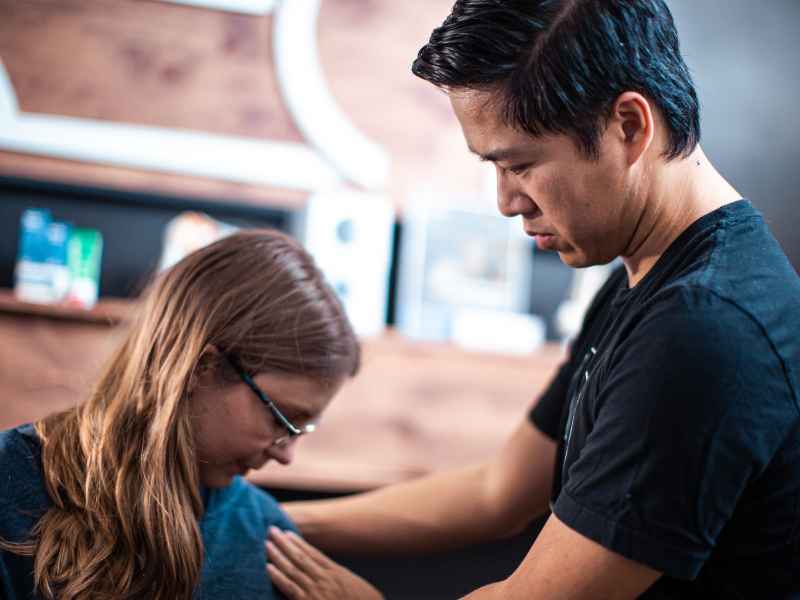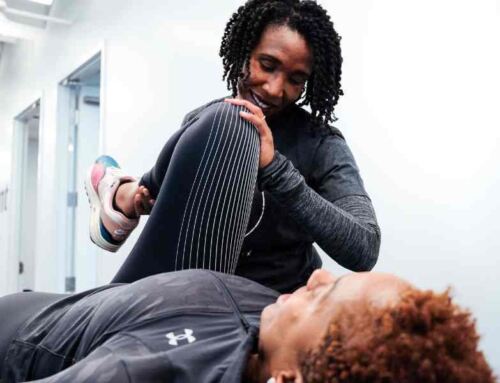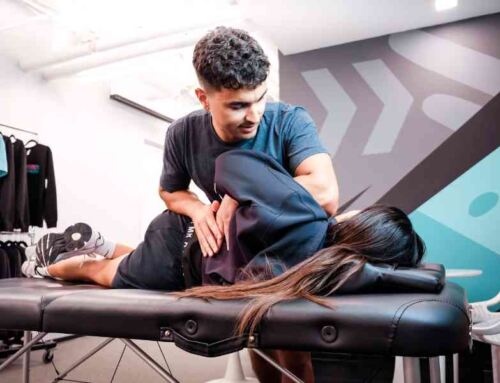Cranio-cervical instability (CCI) is a condition describing excessive movement and lack of stability around the skull (cranium) and neck (cervical) due to weakened or lax ligaments. The brainstem, extensive nerves, and blood vessels go in and out of the skull and neck in this area. CCI can impair the function of a few or many of these structures leading to a variety of vascular, musculoskeletal, and neurological symptoms.
Causes of CCI can stem from a variety of factors. Having a connective tissue disease like Ehler-Danlos Syndrome (EDS), degenerative conditions, trauma to the area, and complications from surgeries.
Like many invisible conditions cranio-cervical instability (CCI) is often under diagnosed or undiagnosed until these issues begin to affect a person’s ability to function. Often finding a medical provider who is even knowledgeable about what can present with CCI is difficult.
As a physical therapist that specializes in chronic conditions, I want to help people understand not only how to live with CCI, but also how to regain function and mitigate future issues.
Whether you’re near me in Orange County, California, or elsewhere in the world, let’s take a look at some of the options available to help you treat your CCI.

Medical Treatment for CCI
Depending on the severity of symptoms and structural involvement, conservative treatment may first be an option before more advanced and invasive procedures.
Initial conservative treatment revolves primarily around lifestyle changes and activity modification to prevent repetitive degeneration or excessive range movements. Bracing may be involved as well as physical therapy for education of movement. Medication is usually to manage pain and inflammation.
In addition to retraining movement, advanced treatments now include orthobiologics such as prolotherapy, PRP and cell therapy injections to strengthen loose ligaments, decrease inflammation, improve pain, and in some situations encourage healing of damaged structures. This treatment is frequently combined with previously mentioned conservative treatment to heal and strengthen tissues that can create lasting results.
There are also injection treatments such as stellate ganglion blocks that can help improve dysautonomia.
As Dr. Shounuck Patel, sports and regenerative medicine physician and owner of FX Regen Center, shares:
“It is very possible to improve your function if you have craniocervical or atlantoaxial instability, but a holistic approach provides the best opportunity for success. This requires hitting things from all angles with a combination of expert physical therapy and targeted injection treatments.”
Lastly, surgical fusion is an option for patients that continue to have little relief from symptoms after conservative and advanced treatment options are evaluated.

Physical Therapy for CCI
Physical therapy is an important component of recovery from some of the life altering CCI symptoms. A physical therapist who is a good match for a CCI patient is preferably someone who has some continuity of neurologic cases. CCI can present with a variety of forms and having knowledge of treatment options specifically to manage the neurological symptoms is important.
How Can Physical Therapy Help Those with CCI?
Here are some ways that physical therapy can directly help those with CCI:
- Stability Training: Gentle, graded exercises that activate the deep neck flexors and mobilize the cervical extensor muscles without aggravating symptoms can be programmed to meet your needs. The goal is not just to build strength, but also develop control.
- Postural Education: We can work on retraining your body alignment in different positions to reduce the demand on ligaments of your cervical spine. This could also include a home or office ergonomics session to optimize your work environment.
- Balance and Proprioceptive Training: Because CCI can affect input from the upper neck to the brain, it can disturb balance and coordination. PT addresses these deficits through targeted neuromuscular retraining.
- Regulation of Dysautonomia: Focused breathwork and spine mobility can help to calm the nervous system and decrease feelings of anxiety, hypertension and digestive discomfort
- Neurodynamics: Tight or irritated nerves can contribute to symptoms. Skilled manual therapy and gentle neural glides can improve mobility and reduce nerve tension.
Orthobiologics and Physical Therapy
Unlike previous advance stage treatment which only included surgical fusion. Healing science has helped us understand better how to aid tissue healing through the use of human tissues.
Orthobiologics work to restore the integrity of the ligaments in the head and neck, physical therapy works to strengthen the muscle and guides the restoration of proper length to the ligamentous structures.
Unlike more invasive advanced options like surgical fusion, orthobiologics work to enhance conservative treatment rather than act against it.
Why the Combination of Orthobiologics and Physical Therapy Works So Well
Orthobiologic treatments are showing real promise for people with CCI. PRP and stem cell therapies may help restore the strength and integrity of ligaments that support the upper cervical spine. However, for these treatments to be truly effective, they need to be supported by a strong and stable musculoskeletal system.
This is where physical therapy shines. Rehab helps ensure that newly healing tissues are not overstressed and are supported by optimal movement patterns. It also addresses the compensatory issues that develop as a result of chronic instability, issues that orthobiologics alone won’t fix.
Together, regenerative injections and specialized physical therapy create a synergy: one repairs from the inside, the other builds from the outside.

Reclaim Your Life from CCI
Living with CCI can be complicated when there’s seemingly no end in sight for the barrage of symptoms.
Luckily, new treatment options and much more knowledge is now available for treating CCI patients non-invasively.
If you’re struggling with symptoms of CCI, there’s hope. Take the next step toward feeling better by booking a free consultation with me (Peter Nguyen, PT, DPT). I am based in Orange County, CA, specialize in neurologic physical therapy and CCI rehab, and I’d love to hear how I can help you on your journey.
About the Author
Dr. Peter Nguyen is a physical therapist, fitness instructor, and health consultant with MovementX in Orange County, CA. He specializes in the treatment of headaches and migraines, rehabilitation after a stroke, and the management of chronic pain. Peter Nguyen also enjoys helping older adults stay strong and healthy. He also serves as a health equity advocate ensuring quality care is delivered to underserved populations in the community.








